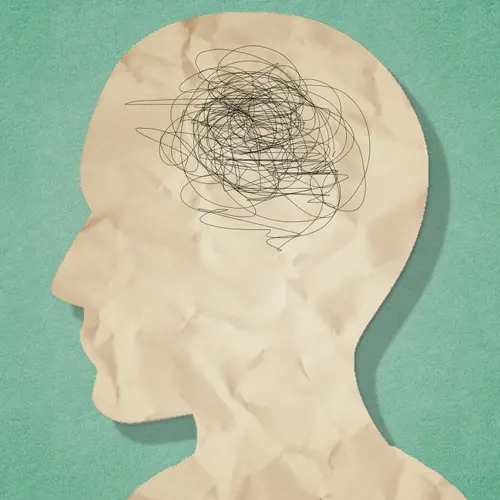ADHD is among the most common mental disorders in children and teens, but plenty of adults have it too. It’s estimated that adult ADHD affects more than 8 million adults (or up to 5% of Americans).
Many of them don’t even know it. Several studies suggest less than 20% of adults with ADHD are aware that they have it. And only about a fourth of those who do know are getting treatment for it.
When Are Most People Diagnosed With ADHD?
The overall average age for an ADHD diagnosis is 7. And every adult who has ADHD also had symptoms during childhood.
Experts used to think that children “grew out” of ADHD. But studies show that more than 60% of children with ADHD still have it as adults.
Adult ADHD can affect your career, relationships, and other aspects of daily life. In fact, it costs the U.S. economy up to $138 billion a year in lost income and productivity. So why do so few adults who weren’t diagnosed as kids realize they have it?
As an adult, you probably no longer have obvious hyperactive symptoms, although you may still have issues like impulsiveness and problems with executive function. So if you weren’t diagnosed as a child, your symptoms could be overlooked.
Also, ADHD tends to occur along with other mental health issues. Anxiety, for example, affects about half of adults with ADHD. Symptoms of adult ADHD can be mistaken for those of conditions like depression, anxiety, or bipolar disorder.
As we learn more about ADHD in adults, diagnoses seem to be on the rise. One study in a California hospital system found a 43% increase in the rate of adult ADHD cases over nearly 10 years.
Gender Differences in Adult ADHD
Among children, boys are more than twice as likely to have an ADHD diagnosis as girls (12.1% of boys have ADHD versus 5.5% of girls). The gender gap narrows a bit in adulthood, when 5.4% of men are diagnosed with ADHD versus 3.2% of women.
Women tend to be older when they’re diagnosed. Many don’t know for sure they have ADHD until they’re in their 30s or 40s.
Scientists are still studying whether males are more prone to ADHD or whether symptoms are more likely to be overlooked in girls and women. Some studies have shown that females tend to have subtle symptoms like inattention rather than more obvious ones like hyperactivity.
Research shows that the number of females getting ADHD diagnoses is growing. That’s important because girls with untreated ADHD are prone to depression, anxiety, and low self-esteem – issues that often carry over to adulthood. Women with untreated ADHD are also more likely to have children with ADHD. In fact, many women are diagnosed only after learning that a child has the condition.
There’s been very little research into how ADHD affects people whose gender doesn't match the sex they were assigned at birth.
Are There Racial or Ethnic Differences in Adult ADHD?
We need more research into whether race or ethnicity play a role in ADHD prevalence, diagnosis, or treatment in adults.
Some studies have identified racial disparities in the diagnosis and treatment of childhood ADHD. One 2016 survey found that 11.5% of non-Hispanic white children ages 4-17 had been diagnosed with ADHD, compared to 8.9% for non-Hispanic Black children and 6.3% for Hispanic children. In one study of Medicaid-enrolled youth, Black and Hispanic children had much lower rates of medication use for ADHD than white children.
Researchers have linked these differences to factors like:
- Bias among health care providers and in schools
- Cultural differences in interpreting symptoms
- Mistrust of the medical system among some communities
Among adults, one study found that while cases among all ethnic groups increased between 2007-2016, white people were most likely to get diagnosed. The study looked at more than 5 million adults in a California hospital system. It found that over that 9-year period, diagnoses rose:
- From 0.67% of the white adults in the study to 1.42%
- From 0.56% to 1.14% in Native American adults
- From 0.25% to 0.65% in Hispanic adults
- From 0.22% to 0.69% in Black adults
- From 0.11% to 0.35% in Asian adults
- From 0.11% to 0.39% in Native Hawaiian and Pacific Islander adults
- From 0.29% to 0.71% in adults who said they were other ethnicities or races
Along with white ethnicity, the same study also linked higher odds of being diagnosed with ADHD to:
- Male gender
- Younger age
- Being employed
- Being divorced
- Having higher levels of education
How Much Do Genes Influence ADHD?
Researchers don’t know exactly what causes ADHD, but it’s known to run in families. If you have relatives with ADHD, you’re four to six times more likely to have it yourself. Some 40% of kids with ADHD have at least one parent who has symptoms.
Studies of twins have shown that ADHD has 60%-90% heritability, which is a measure of how much influence genes have. The same studies show that genetics also strongly influence how ADHD develops over time.
Along with genes, other factors are thought to play a part in whether someone gets ADHD, including:
- Head injuries
- Exposure to environmental toxins like lead
- Premature birth
- Low birth weight
- Whether their mother used tobacco and alcohol during pregnancy

